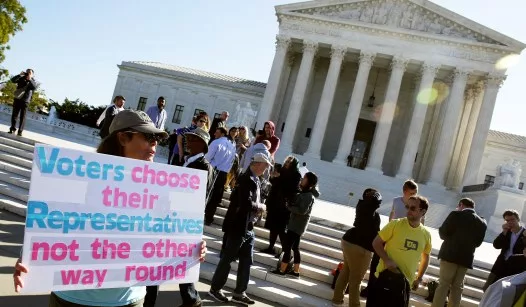The recent decision by the Court to review issues surrounding racial gerrymandering has stirred significant concern among those who view anti-discrimination laws as essential to social justice. For many, this development may come as a surprise; however, it should not be.
Racial gerrymandering, the practice of drawing electoral district boundaries to advantage or disadvantage specific racial groups, has long been a contentious issue in American politics. It raises critical questions about representation, equity, and the integrity of the democratic process. As the Court prepares to delve into this complex topic, it is essential to understand the implications and the broader context of this legal scrutiny.
Historically, the left has championed anti-discrimination laws, viewing them as vital tools in the fight for civil rights and equality. The notion that these laws could be re-evaluated by the highest court in the land is alarming for many advocates who have relied on these protections to combat systemic racism and ensure fair representation. It forces a reconsideration of the strategies employed to address racial disparities in voting and representation.
The potential ramifications of the Court’s review extend beyond legal precedents; they touch on the very fabric of American democracy. If the Court were to rule in favor of more permissive gerrymandering practices, it could undermine decades of progress in civil rights. This could lead to further entrenchment of racial divisions in political representation, ultimately diluting the voices of minority communities.
Understanding the motivations behind gerrymandering is crucial. Political parties, particularly those in power, often manipulate district boundaries to secure electoral advantages. This practice has been criticized for prioritizing party interests over the principles of fair representation. In many cases, the manipulation of district lines has resulted in communities being divided or grouped in ways that do not reflect their demographic realities, further marginalizing already underrepresented groups.
The left’s response to this impending Court review must be proactive. Advocacy groups and political leaders must engage in robust discussions about the implications of gerrymandering and mobilize support for reforms that promote fair districting practices. This could involve pushing for independent redistricting commissions, which have been shown to produce more equitable outcomes by removing partisan bias from the district-drawing process.
Furthermore, public awareness and education are essential components of this effort. Many citizens may not fully understand the complexities of gerrymandering or its impact on their communities. By fostering a greater understanding of these issues, advocates can empower individuals to demand more accountability from their elected officials and push for reforms that prioritize fairness and representation.
The left must also be prepared for the possibility of a ruling that challenges the status quo. This could involve reevaluating strategies for mobilizing voters and advocating for policies that address systemic inequalities. It may be necessary to forge new alliances and build coalitions that transcend traditional party lines, focusing instead on shared values of justice and equity.
As the Court embarks on this critical review, it serves as a reminder of the ongoing struggle for civil rights in the United States. The left must recognize that the fight against racial gerrymandering is not just about legal battles; it is about ensuring that every voice is heard and every vote counts. This moment presents an opportunity for reflection and action, challenging advocates to recommit to the principles of equity and justice that underpin the democratic process.
In conclusion, the Court’s willingness to examine racial gerrymandering is both a challenge and a call to action for the left. It underscores the importance of vigilance in the pursuit of civil rights and the need for continued advocacy in the face of potential setbacks. By engaging in meaningful dialogue, mobilizing support for reform, and educating the public, the left can work towards a more equitable electoral system that truly reflects the diverse voices of the American populace. The stakes are high, and the time for action is now.
